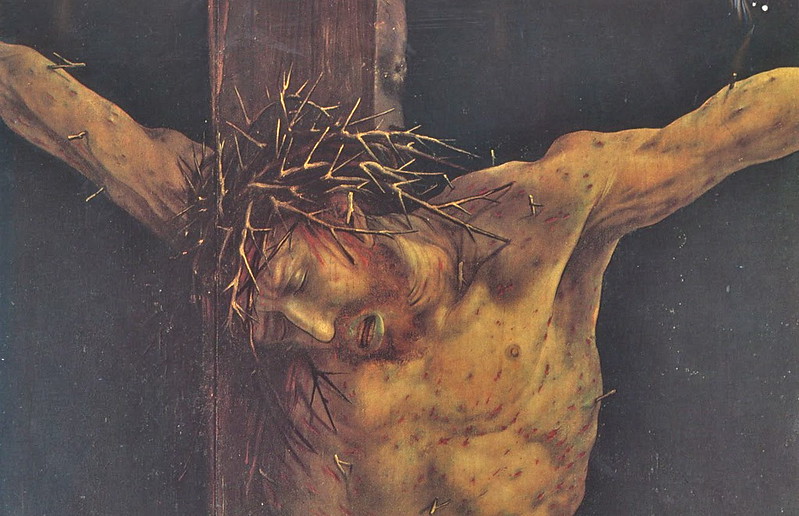How Does “Dying For Our Sins” Work?
How Does “Dying For Our Sins” Work?
Brian Zahnd
When we say “Jesus died for our sins,” what does that mean? It’s undeniably an essential confession of Christian faith, but how does it work? This much I’m sure of, it’s not reducible to just one thing. I’ve just finished preaching eight sermons on “The Crucified God” and I know I’ve barely scratched the surface of what the cross means. To try to reduce the death of Jesus to a single meaning is an impoverished approach to the mystery of the cross. I’m especially talking about those tidy explanations of the cross known as “atonement theories.” I find most of them inadequate; others I find repellent. Particularly abhorrent are those theories that portray the Father of Jesus as a pagan deity who can only be placated by the barbarism of child sacrifice. The god who is mollified by throwing a virgin into a volcano or by nailing his son to a tree is not the Abba of Jesus!
Neither is the death of Jesus a kind of quid pro quo by which God gains the necessary capital to forgive sinners. No! Jesus does not save us from God; Jesus reveals God! Jesus does not provide God with the capacity to forgive; Jesus reveals God as forgiving love. An “economic model” of the cross just won’t work. It’s not as if God is saying, “Look, I’d love to forgive you, but I’ve got to pay off Justice first, and, you know how she is, she’s a tough goddess, she requires due payment.” This understanding of the cross begs the question of who exactly is in charge — the Father of Jesus or some abstract ideal called “Justice”?
When we confess with Paul that “Christ died for our sins,” we don’t mean that God required the vicious murder of his Son in order to forgive. How would that work anyway? Did God have some scale of torture that once met would “satisfy his wrath?” Think it through and you’ll see the problem. Was death not enough to satisfy this god? Did it have to be death by crucifixion? Did torture have to be part of the equation? And how does that work? Was there a minimum number of lashes required in the scourging? Did the thorny crown have to have a certain number of thorns in order for this god to call the scales balanced?
Are you squirming yet? Do you want to say, “Well, some of the abuse Jesus suffered was gratuitous torture by the hands of cruel men.” But if that’s the case, how does this division of labor work? How much was necessary to “satisfy God” and how much was just for the sport of it? No, this approach to understanding Jesus dying for our sins clearly won’t work.
So what do we do? Let’s begin here: Before the cross is anything else, it is a catastrophe. It is the unjust lynching of an innocent man. This is precisely how the Apostles spoke of the crucifixion of Jesus in the book of Acts.
“This Jesus…you crucified and killed by the hands of lawless men.” –Acts 2:23
“You killed the author of life, whom God raised from the dead.” –Acts 3:15
“God raised up Jesus whom you killed by hanging him on a tree.” –Acts 5:30
“The Righteous One you have now betrayed and murdered.” –Acts 7:52
The Bible is clear, God did not kill Jesus. Jesus was offered as a sacrifice in that the Father was willing to send his Son into our sinful system in order to expose it as utterly sinful and provide us with another way. The death of Jesus was a sacrifice in that sense. But it was not a sacrifice to appease a wrathful deity or to provide payment for a penultimate god subordinate to Justice.
Let me suggest that when we say Jesus died for our sins, we mean something like this: We violently sinned our sins into Jesus, and Jesus revealed the heart of God by forgiving us. When Jesus prayed, “Father, forgive them,” he was not asking God to act contrary to his nature. When Jesus prayed, “Father, forgive them,” he was, as always, revealing the very heart of God!
At the cross we violently sinned our sins into Jesus, and Jesus absorbed them, died because of them, carried them into death, and rose on the third day to speak the first world of the new world: “Peace be with you.”
When I say “we” violently sinned our sins into Jesus, I mean that all of us are more or less implicated by our explicit or tacit support of the systems of violent power that frame our world. These are the very political and religious systems that executed Jesus. At the cross we see where Adam and Eve’s penchant for blame and Cain’s capacity for killing have led us — to the murder of God! At Golgotha human sin is seen as utterly sinful. God did not require the death of Jesus — but we did!
So let’s be clear, the cross is not about the appeasement of a monster god. The cross is about the revelation of a merciful God. At the cross we discover a God who would rather die than kill his enemies. The cross is where God in Christ absorbs sin and recycles it into forgiveness. The cross is not what God inflicts upon Christ in order to forgive. The cross is what God endures in Christ as he forgives. Once we understand this, we know what we are seeing when we look at the cross: We are seeing the lengths to which a God of love will go in forgiving sin.
The cross is both ugly and beautiful. It’s as ugly as human sin and as beautiful as divine love. But in the end, love and beauty win.
BZ
The artwork is The Crucifixion (1515) by Grünewald Matthias.
